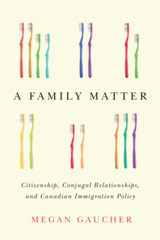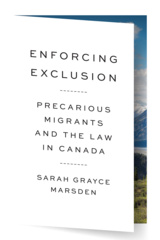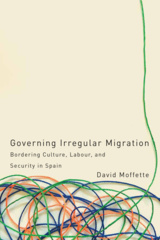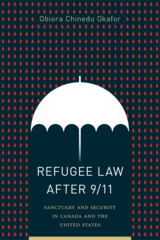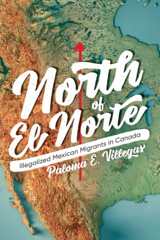
The UN Refugee Agency considers resettlement – the selection and transfer of refugees from the state where they seek asylum to another state – to be a tool of refugee protection and an expression of international burden sharing. Resettlement is voluntary and ad hoc, and Canada is one of three leading resettlement countries in the world.
In this account of Canada’s resettlement program from the Indochinese crisis of the 1970s to the Syrian crisis of the 2010s, Shauna Labman explores how rights, responsibilities, and obligations intersect in the absence of a legal scheme for refugee resettlement. She asks: How does law influence the voluntary act of resettlement, and how does resettlement affect asylum policy? She reveals that the core concept of refugee protection, non-refoulement, which prevents countries from turning away asylum-seekers, can be compromised by resettlement, both by the resettlement selection process and the influence of resettlement practices on in-country asylum.
This pathbreaking look at the interplay between resettlement and asylum in one of the world’s most successful refugee protection programs shows that resettlement can either complement or complicate in-country asylum claims at a time when refugee crises and fear of outsiders are causing countries to close their borders to asylum-seekers around the world.
This book will appeal not only to scholars in law, sociology, and refugee and migration studies but also to general readers and policy makers interested in refugees and resettlement programs.
…the book is incredibly well researched, citing numerous cases and legislation. Because of the uniqueness of its subject matter on immigration resettlement, it is a must-have for any academic law library.
Refugee resettlement in Canada has been a surprisingly under-studied topic. Shauna Labman addresses this gap with her in-depth examination of the historic evolution and current complexities of resettlement in Canada and its relationship to asylum. This is a highly original and important book.
A must-read – this is an authoritative account of how existing laws and policies both at home and abroad dictated the contours of Canada’s resettlement program. Look no further to understand how Canada came to be – and remains – a global leader in this area.
1 Law’s Role in Resettlement
2 Movement
3 History, Humanitarianism, and Law
4 Numbers, Access, and Rights
5 Privatized Protection
6 The State of Sponsorship
7 Beyond the Convention
8 Unsettling Refugee Resettlement
Appendix: Federal Court of Canada Resettlement Cases
Notes; Index








